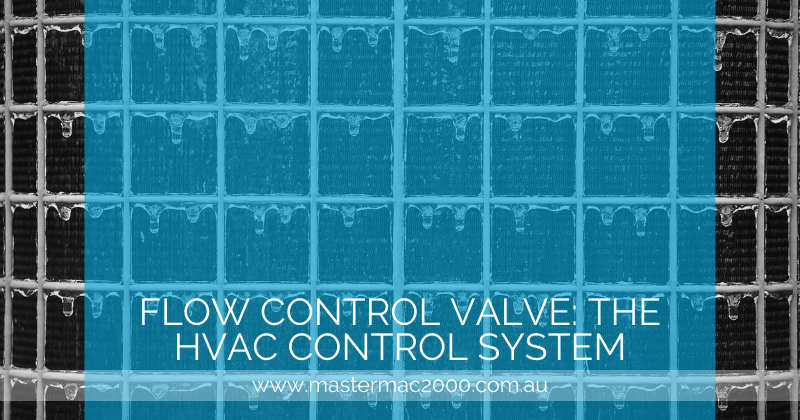Flow Control Valve: The HVAC Control System

HVAC stands for Heating, Ventilation, and Air Conditioning. This is equipment that uses a control system to regulate the operation of the heating or air conditioning system. This can be a sensing device like a pneumatic control system or flow control valve that uses compressed air to receive and send signals that control HVAC equipment.
Pneumatic control systems move pressurised or compressed air ‘signals’ from a controller to a device through copper or plastic tubes. Pneumatic systems can also have electronic controls that send and receive electric or electronic signals.
How do pneumatic controls work?
Compressed air is the standard method of control for HVAC systems. The compressed air is carried through plastic or copper tubes from a controller to a control device. This control is usually a valve actuator or damper. This control method is dependent on thermostats and sensors that retain the line pressure from the sensor to the control device. Each sensor responds to changes in static pressure, humidity, and temperature to provide accurate information to either open or close the actuator to meet the control set point.
Why use pneumatics for HVACs?
Because of the simplicity of pneumatic devices, they can perform a combination of tasks at any one time for automated equipment. Pneumatic control systems are used in various industries such as in manufacturing and power automation, as well as for heating and air conditioning. Though there are electric and electronic control systems for pneumatics, pressure control systems using compressed air have lower maintenance costs due to their simple design, simplicity, and compressed air mechanism.
Pressure sensors
This type of sensor system measures water or air pressure and provides a signal that corresponds to that pressure. These could be integrated with a control device or as stand-alone units. Pressure, air, or water flow are essential factors for HVAC system efficiency. This efficiency can impact mainly on controlling costs.
Pressure switches
Also called differential pressure switches, these sense overpressure vacuum as well as pressure differentials. This is done in environments such as ducted ventilator systems. When the pressure or environment falls outside a set range, the pressure switch sends a signal to other control devices that trigger a remote status alarm or change settings for recalibration or manual inspection.
Master Mac 2000
Master Mac 2000 is the sole authorised Australian Mack Valves distributor for flow control valve systems, pneumatic valves, as well as other cylinder and valve components, particularly in Queensland and Northern NSW. For all your pneumatic system needs, you can call us at 0733444711 or visit our website at https://mastermac2000.com.au/.

About MasterMac2000: Your Trusted Pneumatic & Process Automation Partner.
LEADING THE INDUSTRY: Established in 1989, MasterMac2000 has grown to become one of Australia's largest privately owned pneumatic and process automation companies. We stock top-quality brands like Univer, Mack, Tolomatic, Mac, Piab, American, and Rotoflux in Brisbane.
SERVING QLD & NORTHERN NSW: We proudly service Queensland and Northern New South Wales for all your pneumatic and process equipment needs. Our mission is to provide the best pre and post-sales support while actively expanding our client base.
SOURCING HARD-TO-FIND PARTS: Not only do we stock quality components, but we also excel at sourcing those elusive, hard-to-find parts. With our extensive database and global network of contacts, getting the parts you require is as easy as a call to our highly skilled, professional sales team.
DEDICATED TO YOUR SUCCESS:
- Decades of expertise in pneumatics & process automation
- Carefully curated selection of world-class brands
- Exceptional sourcing capabilities for speciality parts
- Knowledgeable sales staff dedicated to finding solutions
- Unwavering commitment to customer service excellence
About The Author
Stuart Havill
Stuart Havill is the owner and manager of MasterMac2000, Queensland's largest privately owned pneumatic and process valve company.
With his early working career as a maintenance fitter for Boral in 1992, Stuart has spent his life in the field of pneumatics and process equipment. He gained extensive experience in plant design, maintenance, repairs, fabrication, and site management.
In 1996, he transitioned to a pneumatic sales technician role at MasterMac2000, where he excelled in key account management, providing cost-effective solutions, and managing a sales team of 9 employees.
Since 2002, Stuart has been the manager at MasterMac2000, overseeing the company's growth and establishing it as a leader in pneumatic automation and process valve engineering. His expertise spans customer training, CRM setup, industrial compressor sizing and installation, and turn-key project management.
Under Stuart's leadership, MasterMac2000 has been servicing the industry since 1988, with 5 full-time sales representatives covering northern rivers NSW, Queensland, Northern Territory, and PNG. The company prides itself on providing the best-priced solutions to all customers in the marketplace.
View Stuart’s LinkedIn profile to learn more about his expertise in pneumatics and process equipment.